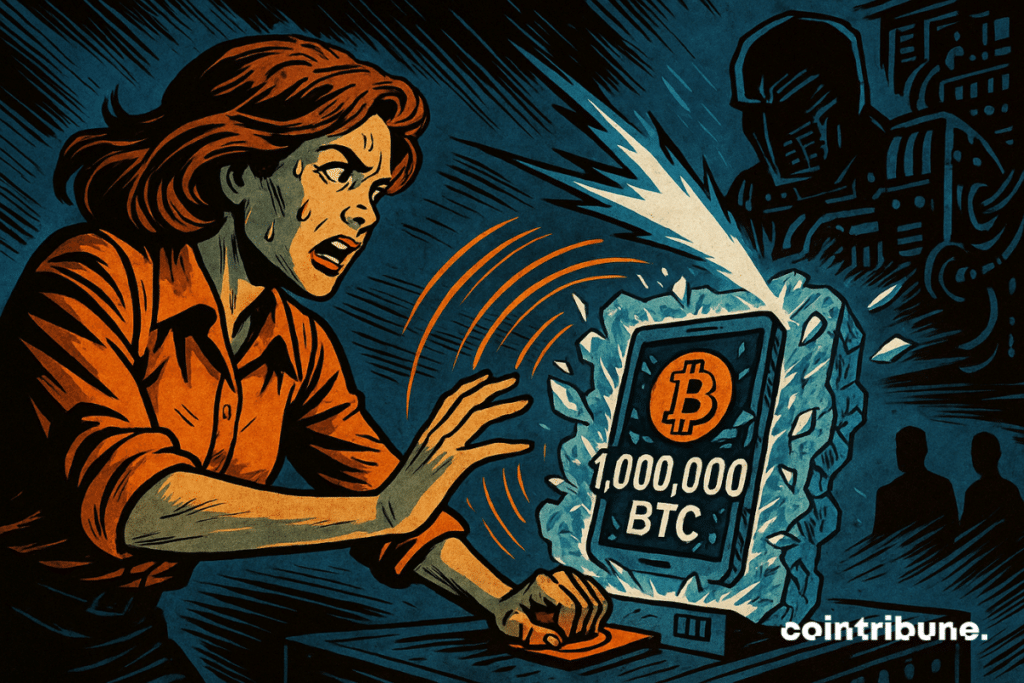Developers Warn Of Post-Quantum Risks To Bitcoin
What if a quarter of the bitcoins in circulation were at risk of being stolen due to a crypto vulnerability? This scenario, now taken seriously, is prompting Jameson Lopp and other developers to propose an unprecedented measure : freezing BTC stored in addresses vulnerable to quantum attacks. Among them are the legendary funds of Satoshi Nakamoto. This is an explosive initiative, balancing the need for security with a challenge to the founding principles of the protocol.

In brief
- A new BIP proposal aims to prevent risks related to quantum computing by freezing certain vulnerable bitcoins.
- Presented by Jameson Lopp and five other developers, this proposal plans to ban the use of old addresses deemed insecure.
- About 25% of bitcoins in circulation would be affected, including the 1 million BTC supposedly owned by Satoshi Nakamoto.
- This initiative sparks intense debate within the community, both for its technical and philosophical implications.
Freezing vulnerable bitcoins : an unprecedented proposal
While Trump prepares a plan to explode bitcoin, Jameson Lopp introduced on July 15 a radical Bitcoin Improvement Proposal (BIP) aimed at gradually neutralizing bitcoins stored in addresses considered vulnerable to quantum attacks.
Co-written with five other developers, this proposal is based on an incentive mechanism: forcing holders of these BTC to migrate to post-quantum addresses or risk losing access to their funds.
“This turns quantum security into a private incentive. If you don’t migrate (to a new type of address), you will almost certainly lose access to your funds,” summarizes the document. The goal is to prevent a collapse of trust caused by the massive compromise of private keys via quantum computing.
The proposal is structured in several concrete steps :
- The gradual ban on sending BTC to old vulnerable addresses ;
- Blocking of all spending from these addresses after a five-year delay unless prior migration ;
- The optional phase (to be defined via a future BIP) allowing post-quantum recovery of frozen funds.
According to a Deloitte study, about 25 % of bitcoins in circulation would be affected, including the 1 million BTC allegedly owned by Satoshi Nakamoto. If these assets were to be unlocked and put back into circulation following a quantum attack, the network would face unprecedented selling pressure, described as a “liquidation event” by Lopp.
The authors of the proposal emphasize the historic moment for bitcoin: “Never before has bitcoin faced an existential threat to its crypto primitives”. Facing an attack deemed inevitable in the medium term, the status quo could cost much more than adopting this exceptional measure.
A consensus and implementation challenge for the Bitcoin community
Beyond its content, Lopp’s proposal triggers significant technical and political challenges. On one hand, the adoption of a BIP relies on a complex community consensus, often slow to form.
“If the Bitcoin community cannot unite and find consensus,” Lopp warned last May, “then it exposes itself to a major collective risk.” Moreover, so-called post-quantum crypto signatures involve a significant increase in data size, reigniting old debates about network scalability.
Hunter Beast, an engineer at Anduro, for example, introduced another proposal (BIP 360) to incorporate new types of post-quantum addresses, but with security levels still to be debated.
Meanwhile, other developers suggest alternative ideas. Michael B. Casey, engineering director at Marathon, proposed a solution called “Hourglass”, aiming to limit transaction throughput from old wallets without freezing them.
This shows that the community is exploring various, often competing, scenarios to address the same problem: how to ensure Bitcoin network security against a still abstract threat, but whose window for materialization is rapidly closing.
If this proposal were accepted, it would inaugurate a new era for bitcoin, where crypto security would no longer be just an individual matter, but also a responsibility of the protocol itself. Conversely, refusal to modify could preserve the integrity of the current system, at the cost of a risky bet on the pace of technological progress.
Maximize your Cointribune experience with our "Read to Earn" program! For every article you read, earn points and access exclusive rewards. Sign up now and start earning benefits.
Diplômé de Sciences Po Toulouse et titulaire d'une certification consultant blockchain délivrée par Alyra, j'ai rejoint l'aventure Cointribune en 2019. Convaincu du potentiel de la blockchain pour transformer de nombreux secteurs de l'économie, j'ai pris l'engagement de sensibiliser et d'informer le grand public sur cet écosystème en constante évolution. Mon objectif est de permettre à chacun de mieux comprendre la blockchain et de saisir les opportunités qu'elle offre. Je m'efforce chaque jour de fournir une analyse objective de l'actualité, de décrypter les tendances du marché, de relayer les dernières innovations technologiques et de mettre en perspective les enjeux économiques et sociétaux de cette révolution en marche.
The views, thoughts, and opinions expressed in this article belong solely to the author, and should not be taken as investment advice. Do your own research before taking any investment decisions.